Collections Corner is an online initiative aimed at highlighting collections from museums and galleries across India that visitors should know more about. This month, we feature artifacts from the Hindustan Aeronautics Limited (HAL) Heritage Centre and Aerospace Museum, the first of its kind in India, established in 2001 in Bangalore.
Image: Exterior of HAL building, courtesy Wikimedia Commons.
History of HAL
Hindustan Aeronautics Limited, the company, was established in Bangalore in 1940 by Mr Walchand Harichand. The Heritage Centre and Aerospace Museum, which opened on August 30, 2001, is spread over a vast site comprising lush green land and houses displays of various aircraft and helicopters, aircraft engine models, flight simulators, a mock air traffic control tower and exhibit of Indian aviation history. The centre also houses a PSLV Heat Shield, which is emblematic of India’s progress in space technology. A library provides a space to academically explore the growth of the Indian Aerospace industry since the 1940s.
The premises also features a orchidarium, herbal garden, children’s play area, a souvenir shop, and a sustainability development park are the added attractions in the campus.The sustainability park aims to educate visitors and students by displaying working models of solar systems, biogas plant, and hybrid wind mills. In addition, the museum also showcases rare picture collections dating from the 1940s to the present day, marking important events and developments in HAL’s history, with detailed photo halls for each decade.
Advanced Light Helicopter “Dhruv”
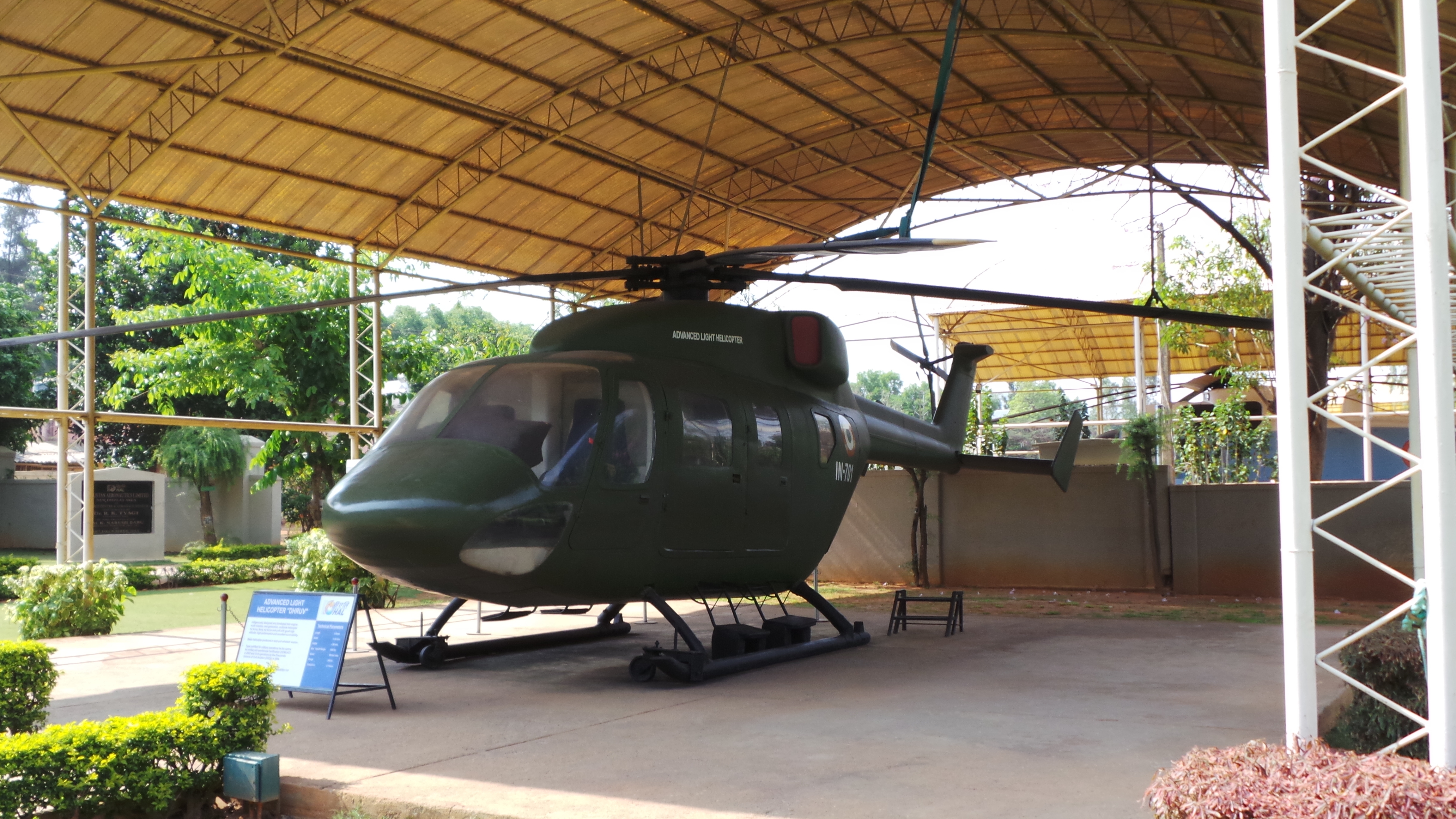
Dhruv is a 16-meter long, 13.2-meter wide and 5-meter tall imposing helicopter indigenously designed and developed by HAL as a twin engine, multi-role, multi-mission, new generation helicopter in the 5.5-ton weight class. It has been certified for operation by both the military and civil authorities, and is used for passenger commute, casualty evacuation, the rapid deployment of forces, logistical air support, search and rescue operations, and training purposes.
More than 100 Dhruvs are operating with the Indian Defence Forces. The helicopter is also being operated by civil customers such as ONGC, GSI, Government of Jharkhand, and the para military forces (BSF). The armed version of Dhruv is called Rudra.
Air Traffic Control Radar and Antenna
The commonly known acronym ‘radar’ stands for radio detection and ranging. It provides positional information of aircraft with respect to their range and angle in relation to the radar device. This air traffic control radar is an ‘L’ band surveillance radar (1250 MHZ-1350 MHZ) with a detection range of 200 nautical miles. Its antenna rotates at a speed of 5-10 revolutions per minute. The antenna is a cosecant squared patterned parabolic reflector, with a single feed horn. It can handle a peak power of 2 megawatts range of 200 nautical miles. Used to detect aircraft, the radar can actually detect any airborne metallic body.
Full Size Heat Shield of a PSLV (Polar Satellite Launch Vehicle)
Heat Shield is the uppermost stage of a Polar Satellite Launch Vehicle (PSLV). It is made in halves of two thin walled, intricately machined aluminum alloy panels and sheets that weigh 1,200 kg. The main purpose of the heat shield is to house the satellite which is to be launched into space orbit. It provides an aerodynamic shape to the launch vehicle and spears it through Earth’s dense atmosphere. Its insides are designed like a honeycomb to withstand high pressure while keeping the heat out.
Image: The honeycomb design on the inside of the heat shield
The special separation mechanism, which joins both halves of the heat shield, is fitted with an explosive cord. When the PSLV reaches the height of about 110 km, this cord is made to explode causing the two halves to separate and fall off.
The shield can carry satellites weighing up to 1,000 kg. The satellites are put into orbit at a height of about 900 km. HAL has supplied components for India’s recent Mars Orbiter Mission under ISRO (Indian Space Research Organisation).
HAl Basant
Image: Photograph of HAL Basant spraying pesticide in the fields, 1974
Designed and developed by HAL, Basant saw its first flight in March 1972 and was produced between 1976 and 1983. Basant, which is the Hindi word for spring, was a single seat aircraft that was put to agricultural use for aerial application of pesticides and fertilisers. This was at a time when India was going through the ‘Green Revolution’ to improve its agricultural output and reduce foreign dependency. It has a raised cockpit to give the pilot a good all-round view during spraying operations over the fields.
HAL Ajeet
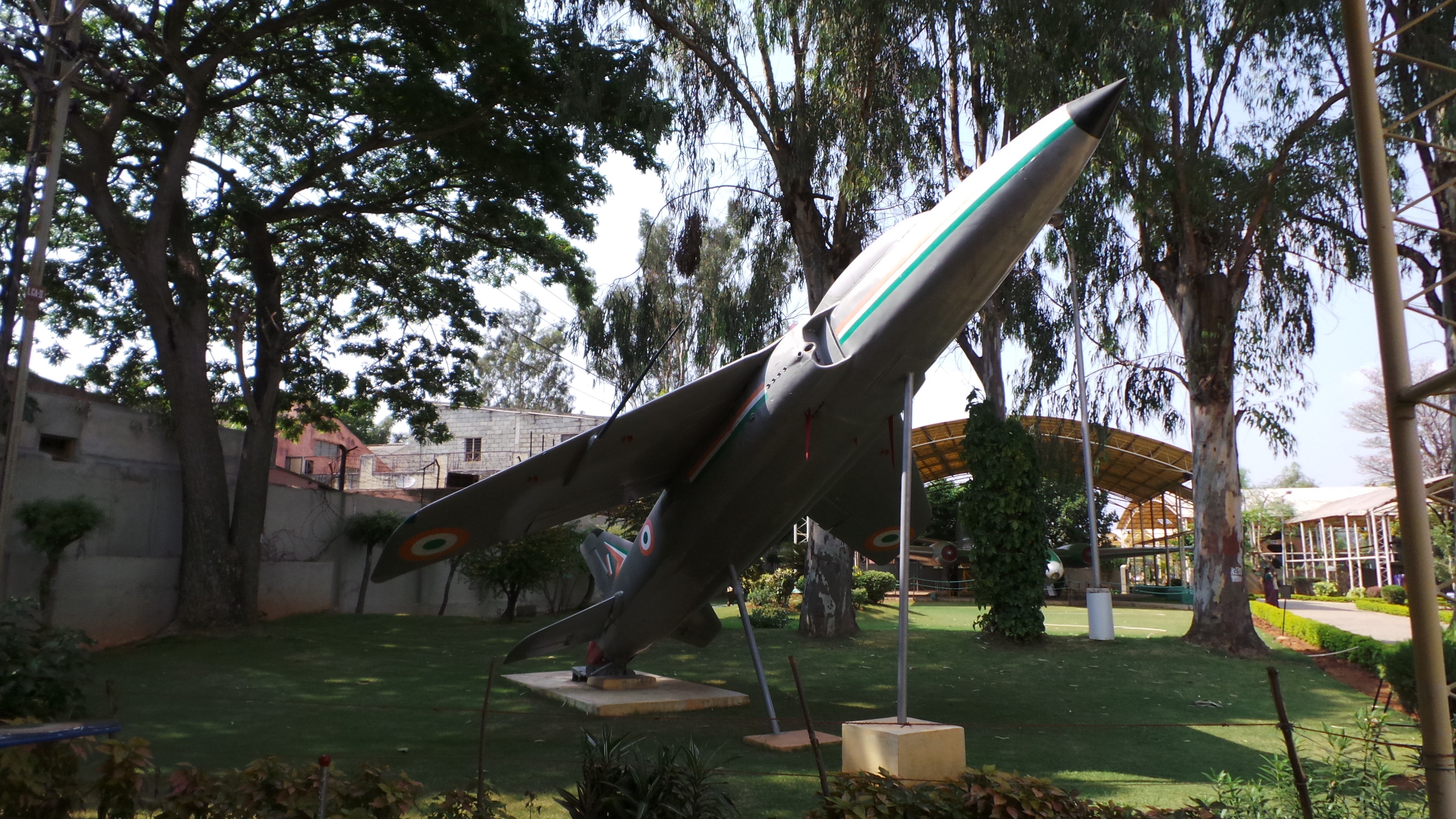
Ajeet (‘Invincible’ in Sanskrit) was issued under licence by HAL in 1972 as an improved version of the midget British Folland Gnat, which was being used by the Indian Air Force and had proved its worth in the wars of 1965 and 1972. After every significant upgrade it is customary to change the name of the aircraft, therefore the British Gnat (named after the insect due to its small size) was rechristened Ajeet by its Indian overhaulers.
Although the external differences between the Gnat and Ajeet were not very obvious, several upgrades were made such as improvements in the landing gear and fitting of the ejection seats, upgrades to avionics, and increase in fuel capacity by adding wet wings (where the fuel is stored in the wings) to make space for carrying weapons. The plane was retired in 1991.
The first prototype of Ajeet can be seen at the busy junction outside HAL’s corporate office on Cubbon Road, Bangalore.
Timings: The museum is open from 9 a.m. to 5 p.m. on all days.
Entry fee: INR 30 per person
Address: Old Airport Road, Bengaluru, Karnataka 560037
Website: HAL Heritage Centre and Aerospace Museum website
Would your museum like to be part of this monthly Collections Corner initiative? Write to info@rereeti.org.







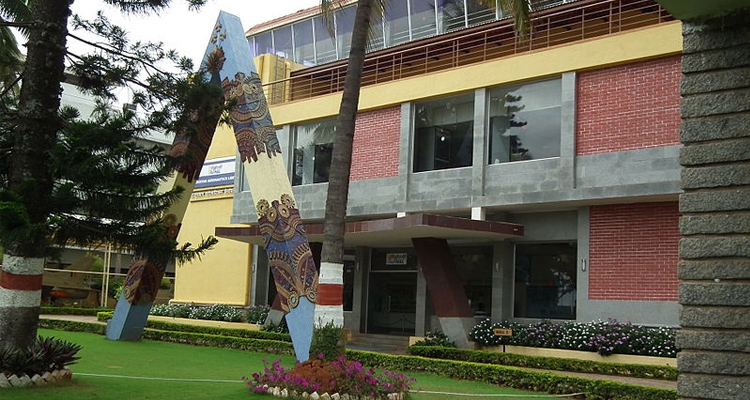

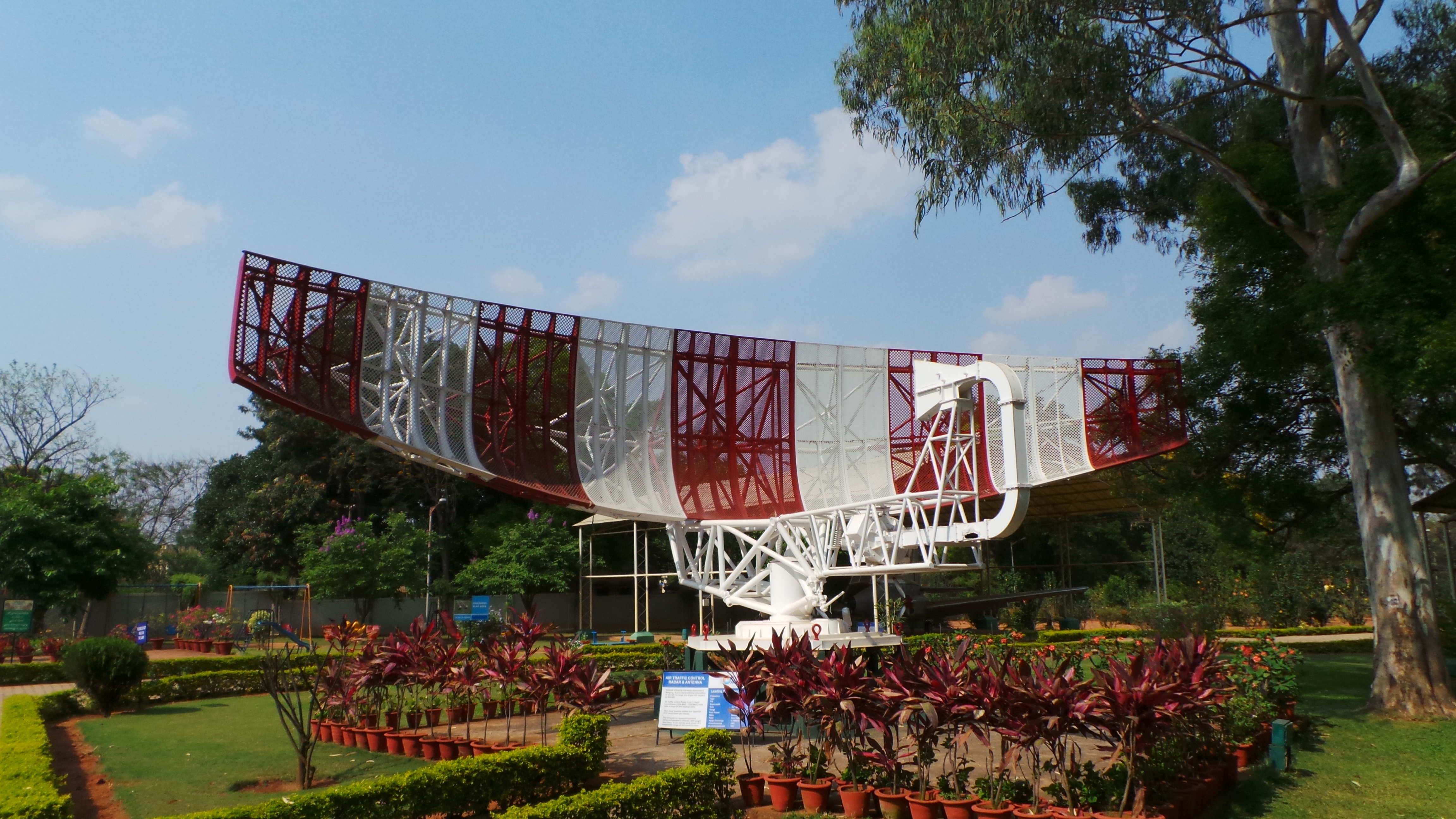
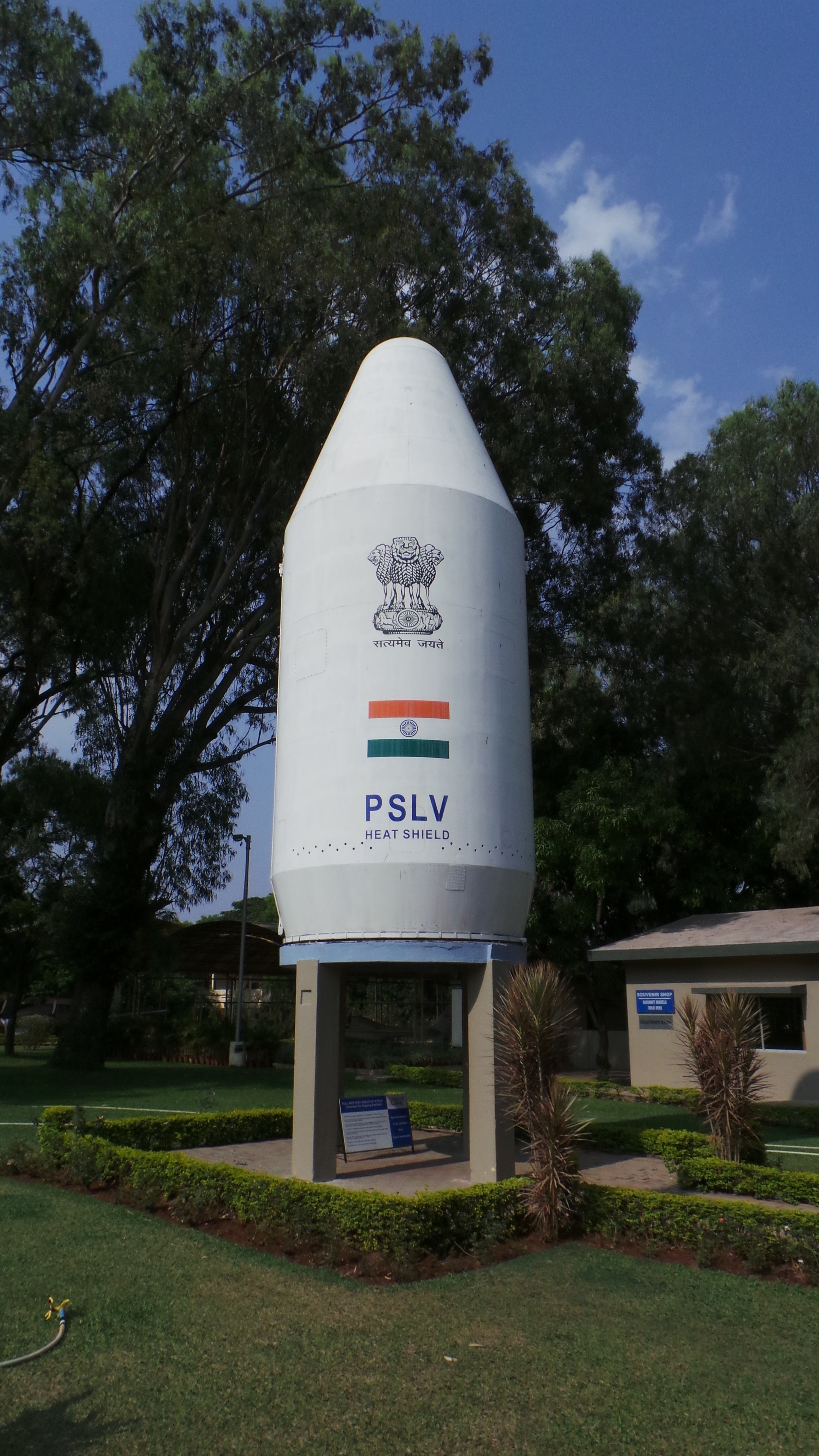
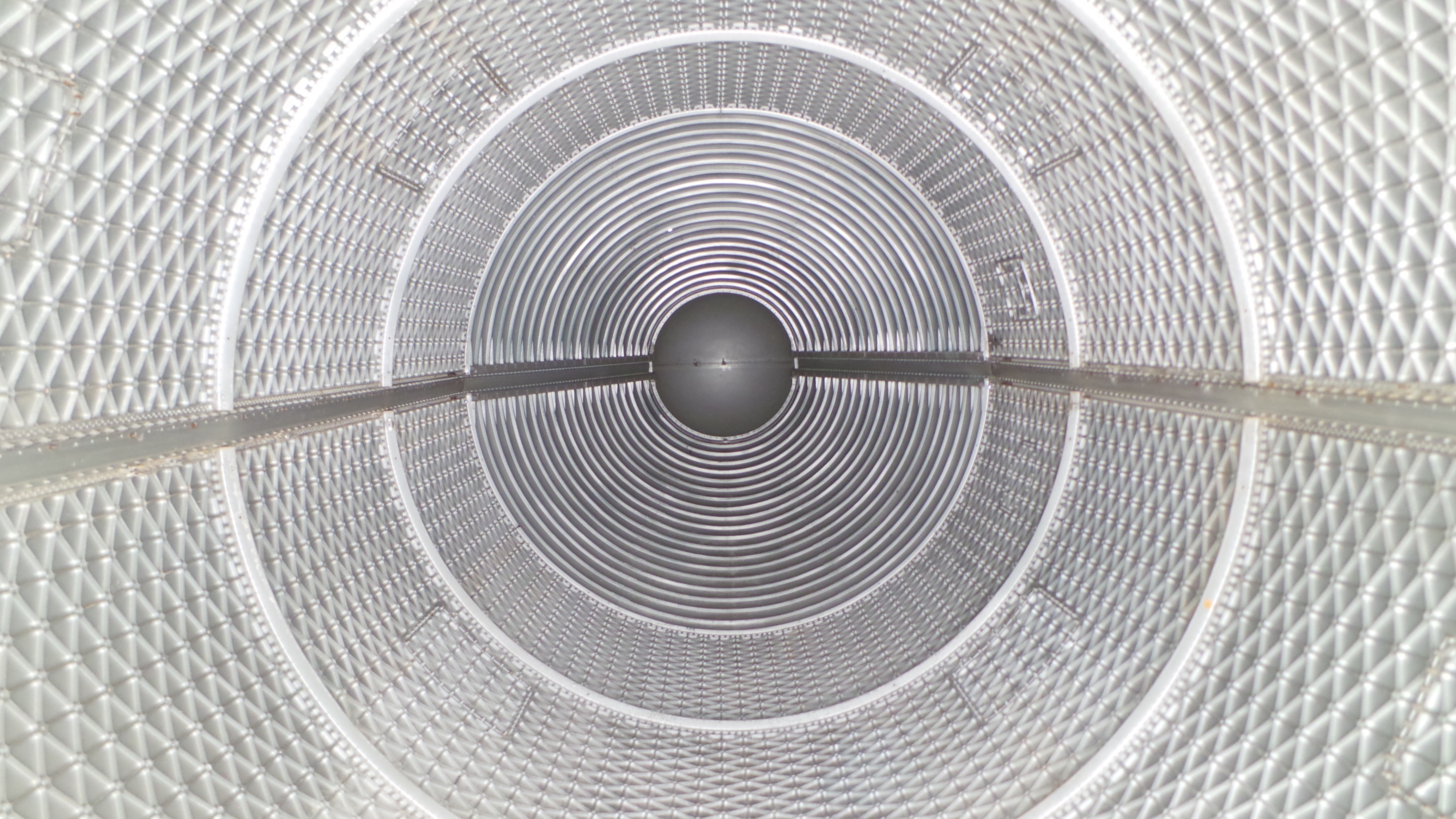
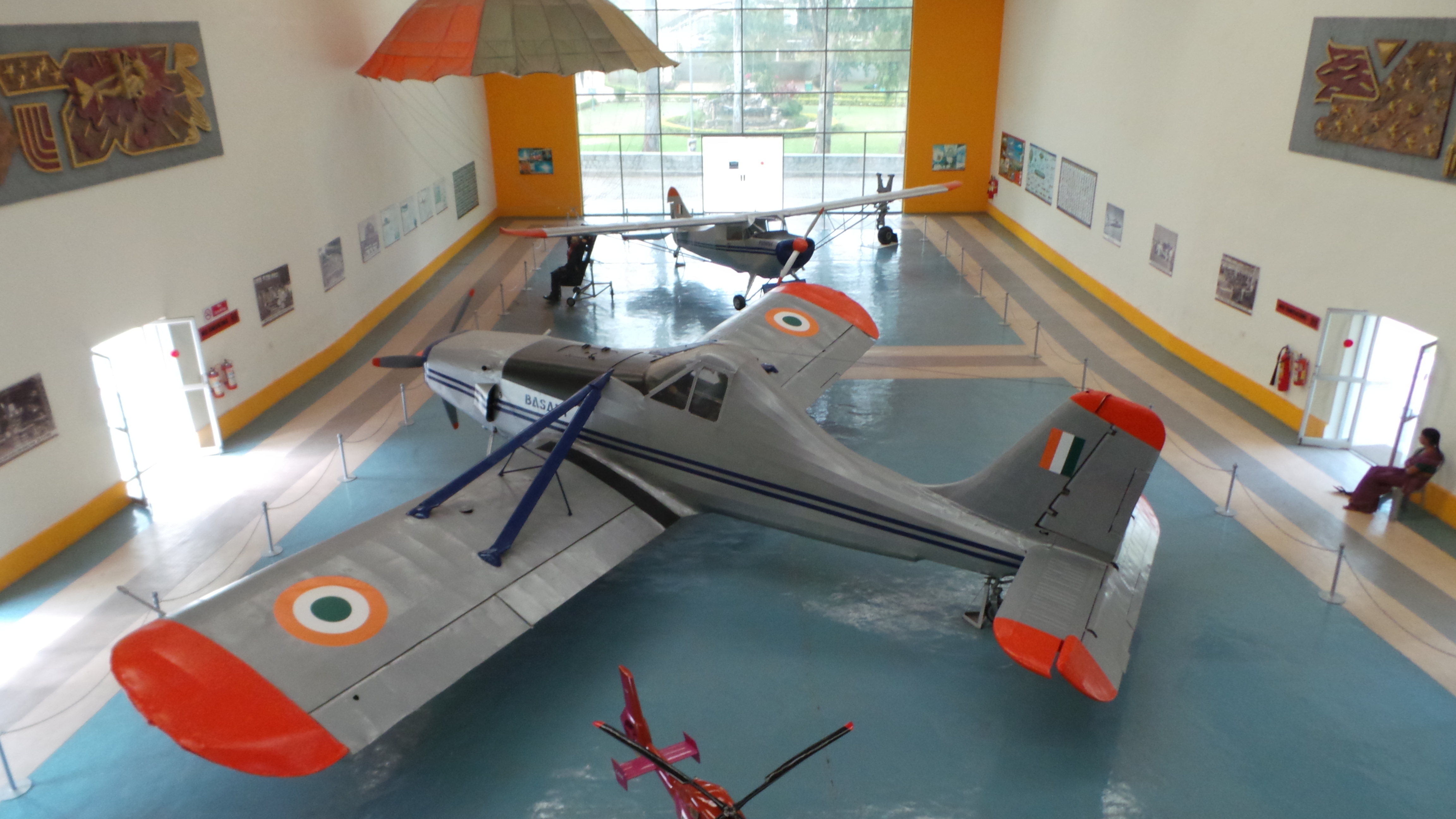

Recent Comments